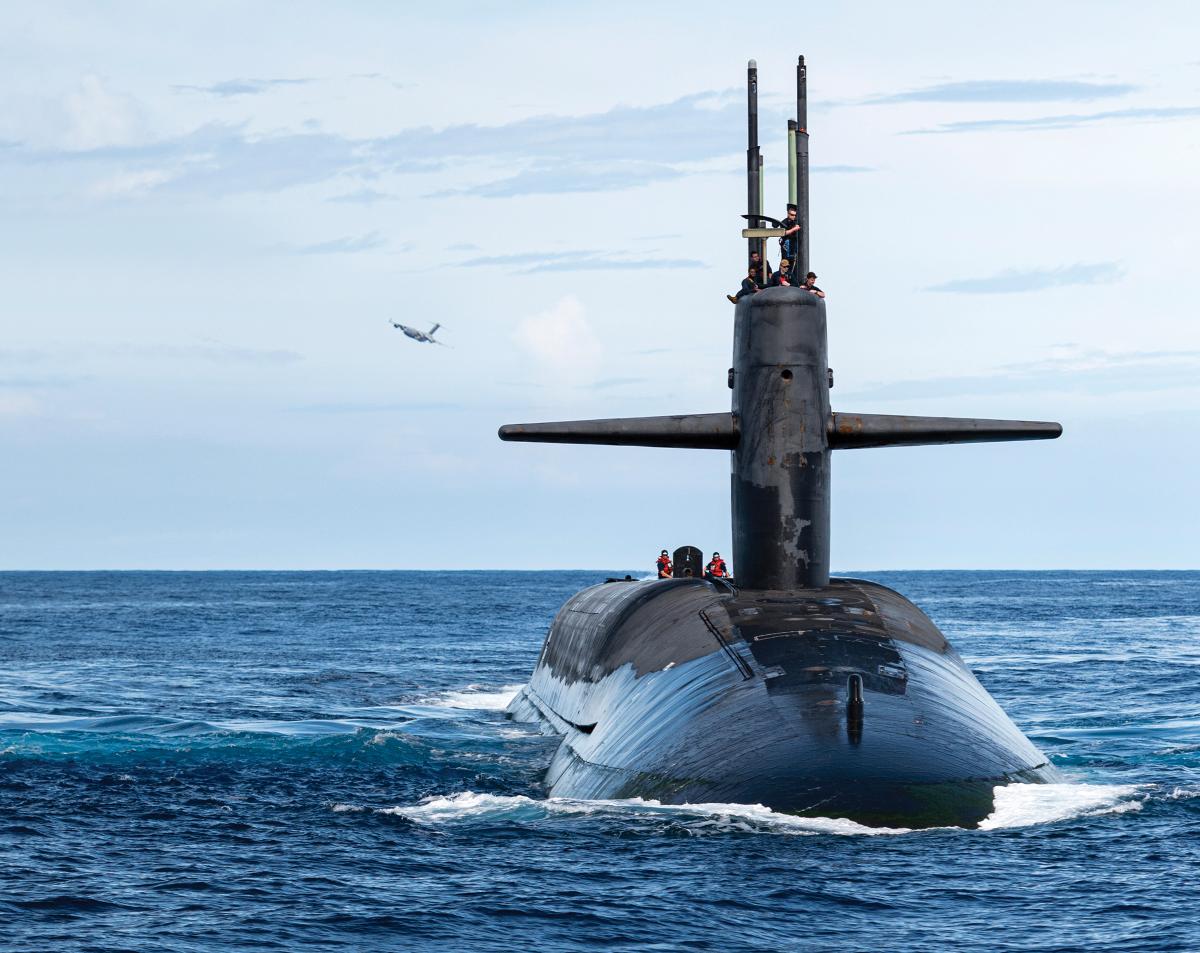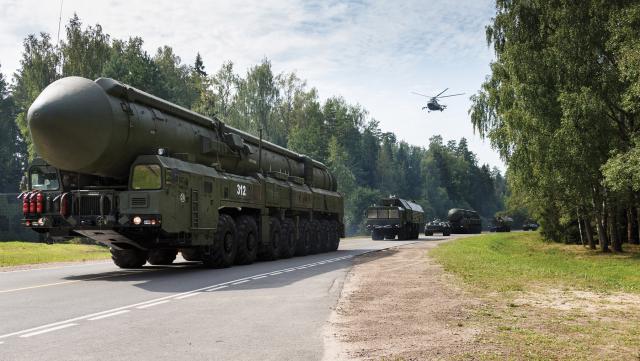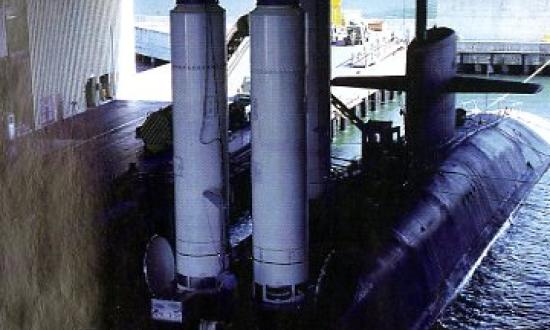Since the collapse of the Soviet Union, the Department of Defense (DoD) has not had to consider the possibility of great power competition, crisis, or direct armed conflict with a nuclear-capable peer. Unfortunately, the current environment no longer affords us that luxury. The implications of today’s competition and the associated risk of great power crisis or direct armed conflict are profound; they affect nearly every fundamental assumption we make about the use of armed force in the defense of the nation and its allies. Until we, as a department, come to understand, if not accept, what we are facing and what should be done about it, we run the risk of developing plans we cannot execute and procuring capabilities that will not deliver desired outcomes. In the absence of change, we are on the path, once again, to prepare for the conflict we prefer, instead of one we are likely to face. It is through this lens that we must take a hard look at how we intend to compete against and deter our adversaries, assure our allies, and appropriately shape the future joint force.
I bristle when I hear the DoD accused of “being stuck in the Cold War.” The department is well past the Cold War; in fact, a large part of our challenge lies in the fact that we no longer view our environment through the lens of potential enemy nuclear employment. The United States has sustained global counter-terrorism efforts for two decades—and has grown accustomed to ignoring the nuclear dimension. Our recent experiences against non-nuclear-armed adversaries have allowed us to believe nuclear use is impossible and not worthy of attention. At the U.S. Strategic Command, we assess the probability of nuclear use is low, but not “impossible,” particularly in a crisis and as our nuclear-armed adversaries continue to build capability and exert themselves globally. Further, assessing risk is more than just assessing likelihood; it also involves accounting for outcomes. We cannot dismiss or ignore events that currently appear unlikely but, should they occur, would have catastrophic consequences.
While DoD’s focus has been on counterterrorism, Russia and the People’s Republic of China (PRC) have begun to aggressively challenge international norms and global peace using instruments of power and threats of force in ways not seen since the height of the Cold War—and in some cases, in ways not seen during the Cold War, such as cyberattacks and threats in space. Not surprisingly, they are even taking advantage of the global pandemic to advance their national agendas. These behaviors are destabilizing, and if left unchecked, increase the risk of great power crisis or conflict. We must actively compete to hold their aggression in check; ceding to their initiatives risks reinforcing their perceptions that the United States is unwilling or unable to respond, which could further embolden them. Additionally, our allies may interpret inaction as an unwillingness or inability to lead. Remaining passive may deny us opportunities to position in ways that underpin one of our greatest strengths: strategic power projection. The moment an adversary’s initiative becomes a fait accompli, the United States would be forced to decide whether to accept their “new normal,” employ military force to reestablish the status quo, or set our own “new normal.”
The strategic capabilities of our competitors continue to grow, and they are sobering. More than a decade ago, Russia began aggressively modernizing its nuclear forces, including its non-treaty-accountable medium- and short-range systems. It is modernizing bombers, intercontinental ballistic missiles (ICBMs), submarine-launched ballistic missiles (SLBMs), nuclear-powered ballistic missile submarines, warning systems, command-and-control (C2) capabilities, and the doctrine to underpin their employment—in short, its entire strategic force structure. This modernization is about 70 percent complete and on track to be fully realized in a few years. In addition, Russia is building new and novel systems, such as hypersonic glide vehicles, nuclear-armed and nuclear-powered torpedoes and cruise missiles, and other capabilities. And its leaders have not been reticent to leverage these capabilities to coerce its neighbors. During the annexation of Crimea in 2014, President Vladimir Putin reminded the world of Russia’s nuclear weapon capabilities, both through words and deeds, to warn against any attempts at reversing the outcome.1
Increased nuclear capability and technologically advanced weapons development are not the only ways Russia challenges the world’s stability. Its military forces often engage in unsafe actions in close proximity to U.S. military forces—actions reflected in headlines such as “Russian Su-35 Fighter Makes ‘Irresponsible’ Intercept of Navy P-8A over Mediterranean,” and “Russian Destroyer Put U.S. Cruiser at Risk with ‘Unsafe’ Maneuver.”2 Russia also constantly challenges norms in cyberspace, as demonstrated by last year’s cyberattack on Georgia’s government and its recent penetrations into U.S. government systems.3 According to U.S. Secretary of State Mike Pompeo, “This action contradicts Russia’s attempts to claim it is a responsible actor in cyberspace.”4 Then, in early 2020, Russia conducted an antisatellite test, threatening international assets in space. Together, these actions demonstrate Russia’s willingness to compete aggressively and ignore international norms.
The People’s Republic of China is also on a trajectory to be a strategic peer and should not be mistaken as a “lesser included” case. Like Russia, it acts aggressively to challenge democratic values and shape the global economic order to its benefit. China continues to make technological leaps in capabilities in every domain. Across its conventional weapons systems, it continues to invest significant resources in hypersonic and advanced missile systems, as well as to expand its space and counter-space capabilities. Its advances in space provide better C2 of its forces worldwide and enhance their situational awareness. It created islands in the South China Sea and placed multiple weapons systems on them. Like the Russians, People’s Liberation Army (PLA) Air Force and Navy forces harass U.S. and allied aircraft and forces operating in international airspace and waters. The PRC also continues to invest heavily in its nuclear capabilities. Its strategic dyad of ICBMs and SLBMs will soon become a triad, with the completion of a nuclear-capable long-range bomber. China is building new land-based, road-mobile ICBMs, providing its forces more flexibility and capability. The PLA Navy Jin-class ballistic-missile submarines carry up to 12 SLBMs each. China has built new warning and C2 capabilities and improved its readiness. Further, China’s nuclear weapons stockpile is expected to double (if not triple or quadruple) over the next decade.
Acting in a responsible manner is incumbent upon any great power. For China, we must pay attention to PRC’s actions more than its stated policies. While the PRC has maintained a “No First Use” policy since the 1960s—contending it will never use a nuclear weapon first—its buildup of advanced capabilities should give us pause. This policy could change in the blink of an eye. Beijing is pursuing capabilities and operating in a manner inconsistent with a minimum deterrent strategy, giving it a full range of options, including limited use and a first-strike capability.
Faced with Russia and China’s growing threats and gray zone actions, the United States must take action today to position itself for the future. We must start by acknowledging that our most fundamental assumption—that strategic deterrence will hold, even through crisis and conflict—is going to be tested in ways not seen before. This assumption is the foundation on which we built strategies, plans, and capabilities. Unfortunately, our opponents invested in nuclear and strategic capabilities designed to constrain U.S. actions, test our alliances, and, if necessary, escalate past us—to include nuclear use. There is a real possibility that a regional crisis with Russia or China could escalate quickly to a conflict involving nuclear weapons, if they perceived a conventional loss would threaten the regime or state. Consequently, the U.S. military must shift its principal assumption from “nuclear employment is not possible” to “nuclear employment is a very real possibility,” and act to meet and deter that reality. We cannot approach nuclear deterrence the same way. It must be tailored and evolved for the dynamic environment we face.
Second, we must wrestle with the relationships among competition, deterrence, and assurance. Despite views to the contrary, successful competition does not result in an “end state.” Great power competition does not span four quarters or nine innings, and our competitors are no less committed than we are. Instead, we should view competition as the mainte-nance of relative advantage over competitors. It is an infinite game, one in which the goal is to remain a dominant player. History offers several examples of competitions that have ended, only to resurface in different, more challenging ways. For example, the collapse of the Soviet Union and end of the Cold War did not result in a singular world order, as many expected.
The idea that competition is about relative advantage also calls into question the oft-espoused view that effective competition reinforces deterrence. Arguably, if a competitive gap becomes too large, a competitor could feel compelled to escalate to armed conflict to rebalance the relationship. Adding to the complexity, we must account for how our competitive and deterrence activities affect our allies. At present, we have several strategies and concepts that address competition, deterrence, and assurance, but few offer much insight into what the balance should be or how to maintain that balance in an advantageous way. As a department, we are wise to establish unity of effort in addressing Russian and Chinese aggression, while understanding they require different deterrence approaches, and incorporating that thinking into professional military education at the earliest opportunity.
Third, we must rethink how we assess strategic risks and how those assessments inform our planning and execution. Following our conclusion that crisis or conflict with a nuclear-armed adversary could lead to nuclear employment, U.S. Strategic Command embarked on a revised “Risk of Strategic Deterrence Failure” assessment process to better inform our own thinking. Doing so builds the structure and muscle memory now, so if the environment changes in ways that lend themselves to deterrence failure, we are postured for expedient action. We are also using these insights to refine tailored deterrence strategies to better account for competition, crisis, and conflict.
Finally, DoD must reframe how it prioritizes the procurement of future capabilities. Our record in this regard is not stellar.5 We must ensure that all of our capabilities map to an overarching strategy. We must acknowledge the foundational nature of our nation’s strategic nuclear forces, as they create the “maneuver space” for us to project conventional military power strategically. We must transform how we think about, employ, and procure capabilities that, to this point in our history, generally have been considered “enablers,” such as space, C2, and cyber; they can be, by themselves, decisive. We must remain agile in our development, looking for ways to integrate and deploy our capabilities faster, to maintain the initiative. In short, we must pursue capabilities that preserve our competitive edge and, if called on, are decisive early, before an adversary’s stake is too great or the opportunity has passed.
While this is a sobering picture, it is not intended to discourage; rather, it is meant to highlight reality and reinvigorate a conversation across the enterprise. Our challenges are not insurmountable. Time and again, DoD has demonstrated its willingness and ability to address changing environments. We must adapt to today’s strategic environment by understanding our opponents’ threats and their decision calculus. We must also accept the gauntlet of great power competition with our nuclear-capable peers. It is through a holistic risk assessment process that we can better align national resources and military readiness to ensure strategic security. In the end, it comes back to the threat. Until we come to a broad understanding of what the threat is and what to do about it, we risk suffering embarrassment—or perhaps worse—at the hands of our adversaries.
Note: This article was written with contributions from Mr. Patrick McKenna, Mr. David Toczek, and Major Jessica Tiffany, U.S. Air Force.
1.”Ukraine Conflict: Putin ‘Was Ready for Nuclear Alert’,” BBC News, 15 March 2015.
2. Sam LaGrone, “Russian Su-35 Fighter Makes ‘Irresponsible’ Intercept of Navy P-8A over Mediterranean,” USNI News, 4 June 2019, and Sam LaGrone, “Video: Russian Destroyer Put U.S. Cruiser at Risk with ‘Unsafe’ Maneuver,” USNI News, 7 June 2019.
3. Press statement by Secretary of State Michael R. Pompeo, “The United States Condemns Russian Cyber Attack Against the Country of Georgia,” 20 February, 2020, www.state.gov/the-united-states-condemns-russian-cyber-attack-against-the-country-of-georgia/.
4. Pompeo, “The United States Condemns Russian Cyber Attack.”
5. Arguably, we were close with Operation Desert Storm—right adversary doctrine and capabilities, but still wrong theater.







